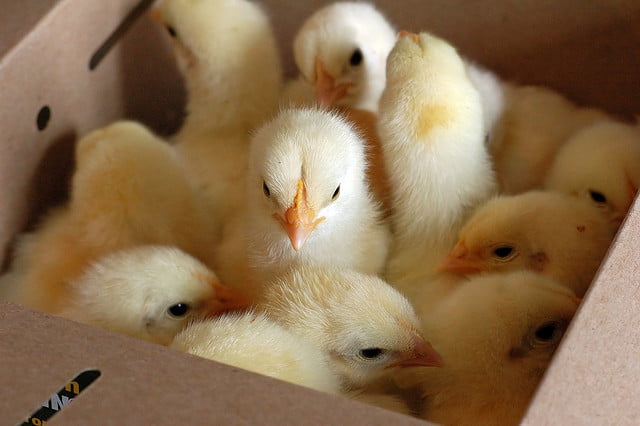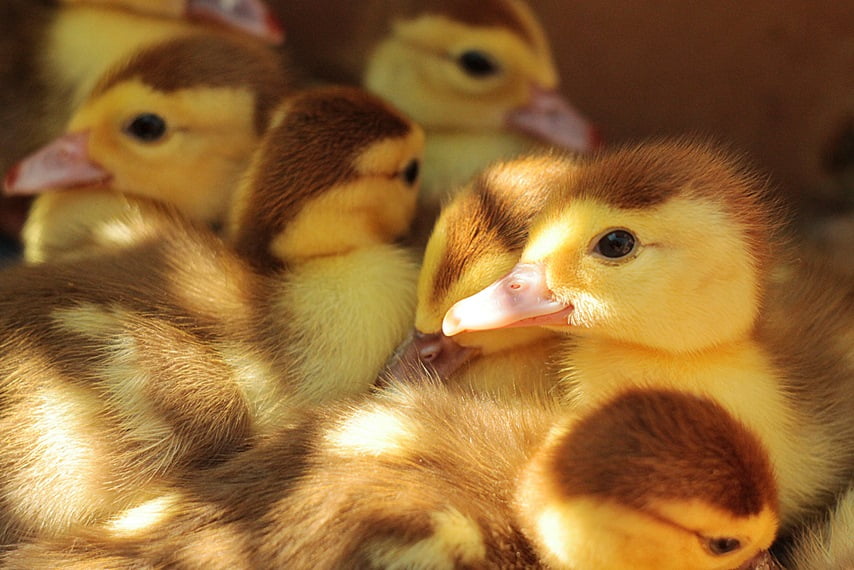Every year, the poultry industry kills up to 7 billion male chicks simply because they do not produce enough meat (or eggs) to justify raising them to adulthood.
While the female chicks are spared for egg laying, the male chicks are eliminated and disposed of by hatcheries through suffocation, maceration – a process that involves a conveyor belt and a giant blender – or other methods in a procedure known as male chick culling. The male chicks are generally killed soon after they hatch and shortly after their gender has been determined.
Now, a technology called TeraEgg developed in Israel by Novatrans, can determine whether the egg will hatch into a male or female chick before incubation, preventing the hatching of eggs containing male chicks.
SEE ALSO: Eating A Steak Could Cost Us Our Planet, Researchers Find
TeraEgg: putting an end to male chick culling
Vital Farms, a leading American brand of pasture-raised eggs, raises healthy egg-laying hens on fresh pastures where they can be outside year-round and conditions are regularly inspected and approved as humane. Vital Farms’ new subsidiary, Ovabrite, in partnership with Israeli company Novatrans, recently introduced TeraEgg, a new non-invasive technology designed to end the culling of male chicks.
Novatrans, the Israeli startup providing the technology behind the initiative, was founded in 2003 by Oren Sadiv and raised $50 million from investors in 2010.
TeraEgg, which recently completed its early testing phase, analyzes organic compounds to identify the gender and fertility of eggs before incubation through a non-invasive process that uses terahertz spectroscopy (electromagnetic waves). This technology is able to determine whether it is male, female, or infertile through the detection of gasses that leak from the pores of the egg within seconds, rather than allowing the chicken to hatch – a process that otherwise takes around three weeks.
In other words, TeraEgg detects gender and fertility in the chicken embryo development process, allowing hatcheries to remove male and infertile eggs before they enter incubation, so they can be re-purposed for human consumption rather than destroyed post-incubation.
SEE ALSO: Vegetarian Meat Eaters: Israeli Startup SuperMeat Grows Chicken Meat In A Lab
Sign up for our free weekly newsletter
SubscribeBy eliminating the egg industry’s practice of chick culling, TeraEgg hopes to reduce energy costs and labor without disrupting hatchery operations, as well as to create new revenue streams for egg hatcheries.
The demand for cage-free eggs is growing
According to the USDA, in order to meet current and future demand for cage-free eggs, farmers will need 175 million cage-free hens in the coming years, but there are currently only 18 million. As the worldwide demand for cage-free eggs continues to grow, so does the demand for hens. Every increase in egg demand means a two-fold increase in hatched chicks, since half those chicks will be male.
Building a product “solely to destroy half of it before it ever ships” makes little sense
“Animal welfare groups have long decried chick culling, but it makes a lot of sense to end the practice from a hatchery’s perspective, too,” Ovabrite’s President, Paul Knepper, said in a statement. “We estimate the value of wasted eggs – male and infertile – to be at least $440 million annually, with an additional $70-plus million in labor and energy to incubate and sex those eggs. I can’t think of another industry where you build out a product solely to destroy half of it before it ever ships. TeraEgg is giving these hatcheries a way to eliminate all that waste and produce additional revenue off of all their eggs, instead of just half.”
Successful completion of the early testing phase represents a major milestone for TeraEgg. Ovabrite is expected to begin commercial product development in late 2017.
According to Matt O’Hayer, Founder and CEO of Vital Farms, “TeraEgg has the potential to be one of the greatest advancements in the recent history of animal welfare.”
Photos and video: Vital Farms
Related posts

Rehabilitation Nation: Israeli Innovation On Road To Healing

Israeli High-Tech Sector 'Still Good' Despite Year Of War







Facebook comments